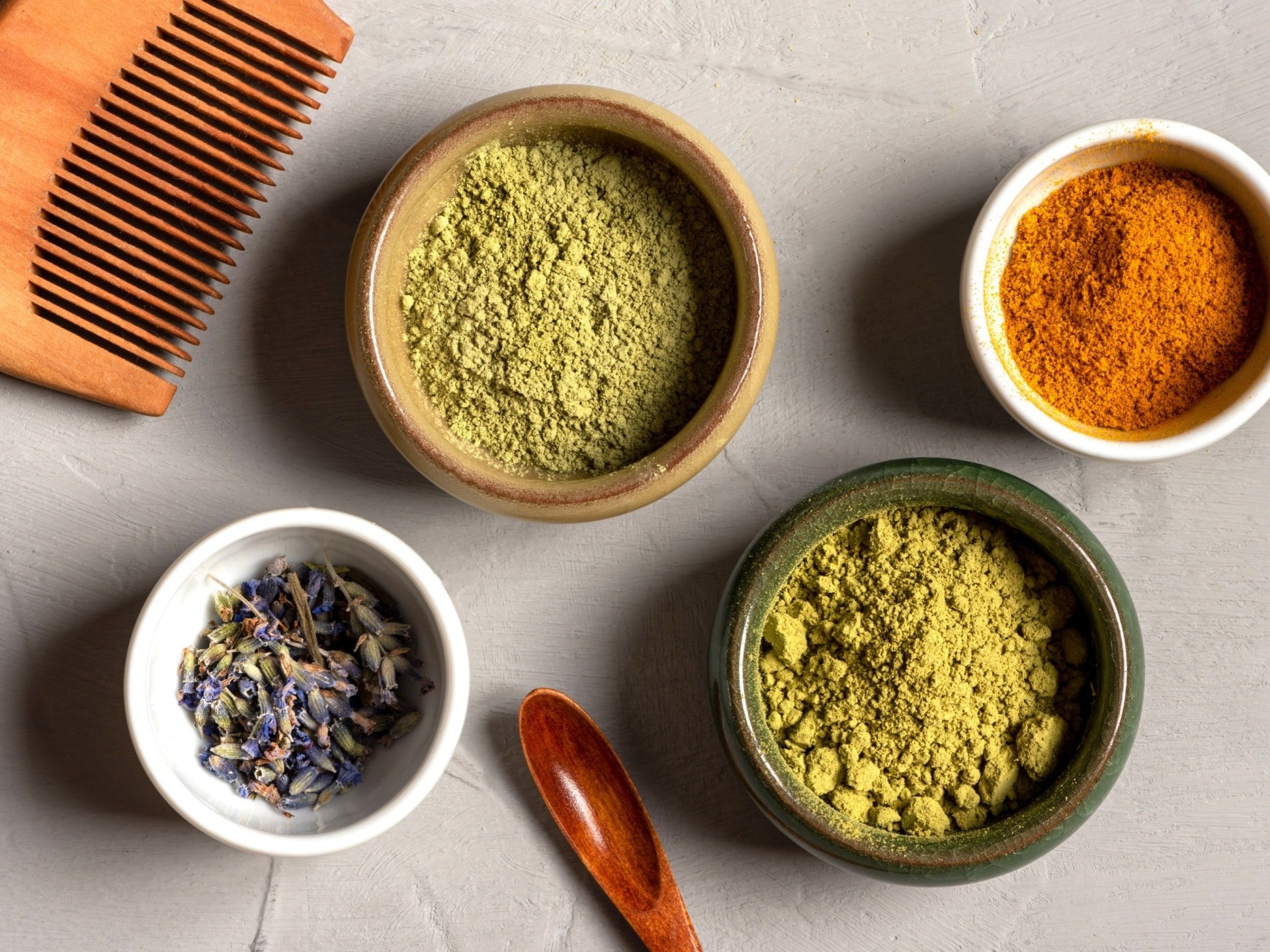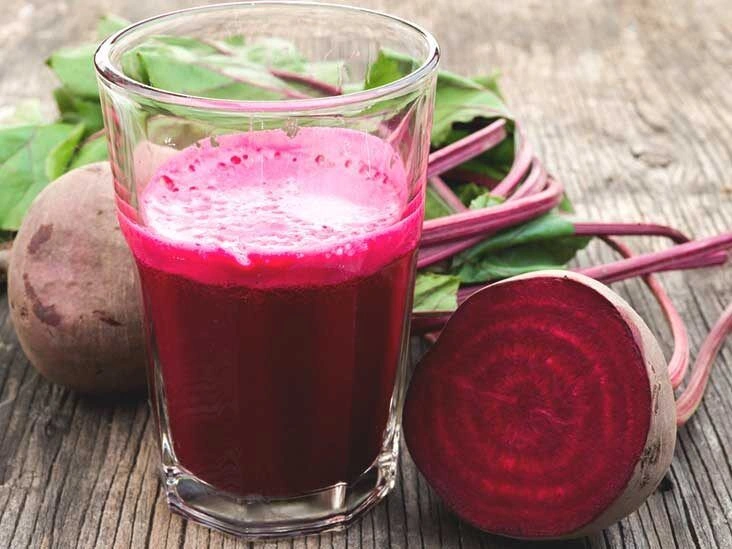Conventional hair dyes often include harsh, potentially harmful chemicals. Opting for natural hair colorants can be a gentler choice, since many use ingredients you may already have in your kitchen.
You can change your hair color in multiple ways — at a salon, with an at-home boxed dye, or using a temporary color spray.
If you’re interested in more natural options, consider trying the following homemade dyes to tint your hair.

1. Carrot juice
Carrot juice is a good pick if you want a reddish-orange glow. Depending on your starting shade, the tint may persist for a few weeks.
To use carrot juice as a dye:
- Combine carrot juice with a carrier oil such as coconut or olive oil.
- Generously apply the blend to your hair.
- Cover your hair with plastic and let the mixture sit for at least an hour.
- Rinse using apple cider vinegar. Repeat the process the next day if the shade isn’t intense enough.
2. Beet juice
If you prefer a richer red with cooler undertones, beet juice is a better alternative to carrot juice.
The method for beet juice is similar to that for carrot juice:
- Mix beet juice with a carrier oil.
- Apply liberally to your hair and wrap it in plastic.
- Allow it to sit for at least an hour before rinsing.
3. Henna
Henna is a plant-based dye commonly used for temporary skin designs, but it’s also effective for coloring hair red.
Henna arrives as a powder and is one of the most long-lasting, vivid natural options. The color can remain for four to six weeks.
To apply henna to your hair:
- Mix roughly 1/2 cup of henna powder with 1/4 cup of water.
- Stir until the mixture is smooth and resembles mashed potatoes, adding more water if needed.
- Cover the bowl with plastic wrap and let it rest for about 12 hours. You may need to add water after this resting period to reach a spreadable consistency.
- Wash your hair but don’t condition it.
- Use a headband and smear an oil (for example, coconut oil) along your hairline to prevent staining your skin.
- Apply the paste to small sections of combed, damp hair until fully covered.
- Wrap your hair in plastic and let the color develop for at least two hours and up to six before rinsing.

4. Lemon juice
Lemon juice gradually lightens hair by stripping some pigment, making it ideal for achieving natural, sunlit highlights.
Unlike the temporary tints above, lemon juice can produce lasting changes: the pigment in the treated hair will be diminished. The only way to remove hair lightened this way is to trim it off.
To lighten hair with lemon juice:
- Pour lemon juice into a spray bottle.
- Spritz your hair generously with the juice.
- Use a comb to distribute and separate the juice evenly.
- Sit in direct sunlight for best results.
- Leave the lemon juice on for at least an hour, then rinse.
You can repeat the process multiple times to reach the desired lightness. It works slowly and often requires several sessions.
5. Coffee
Brewed coffee can do more than wake you up — it can darken hair by a shade or two and may help mask some gray strands.
To dye your hair with coffee:
- Brew a strong cup of dark-roast coffee.
- Mix about 1/2 cup of the brewed coffee with 2 tablespoons of used coffee grounds and 1 cup of leave-in conditioner.
- Apply the mixture to clean, damp hair.
- Let it sit for at least an hour, then rinse.
- Repeat as needed.
Coffee won’t create a dramatic transformation or long-lasting color, but it’s a quick, inexpensive option for a subtle boost.
6. Sage
Sage works well for those with dark brown or black hair who want to deepen their color. It can enrich brunette tones and help hide gray hairs.
To use sage as a dye:
- Steep 1/2 to 1 cup of dried sage in a quart of boiling water for at least 30 minutes. The longer it steeps, the stronger the tint may become.
- Allow the liquid to cool and strain out the sage.
- After washing and towel-drying your hair, pour the sage infusion over your hair repeatedly.
- Let the tint set for at least 15 minutes before rinsing.
7. Chamomile tea
Chamomile tea can gently lighten hair and works especially well for people who are already blonde.
To lighten hair with chamomile:
- Steep 1/2 cup of chamomile flowers in boiling water.
- Let it steep and cool for about half an hour, then strain out the flowers.
- After shampooing, pour the brewed tea through damp hair at least 10 times.
- Wait 16 minutes before rinsing out.
While a single treatment can have an effect, the best results come from using it weekly to preserve the brighter shade.

How to make natural hair color last longer
After coloring your hair naturally, you’ll likely want the shade to hold. Try these tips to prolong your color:
- Minimize use of heated styling tools such as blow dryers, flat irons, and curlers.
- When using heat, protect your hair with a thermal protectant product.
- Avoid very hot showers and reduce how often you wash your hair.
- Install a shower water filter to reduce exposure to color-fading chemicals like chlorine and heavy metals.
Natural hair dye brands
If DIY mixtures aren’t appealing, there are commercially made natural hair dyes. These products often claim to exclude the harsher chemicals found in regular dyes, though you should read labels carefully to avoid ingredients such as parabens, ammonia, and sulfates.
Brands to consider:
Risks of conventional hair dyes
Standard hair dyes contain chemicals that may have harmful effects. Research suggests that both semipermanent and permanent oxidative dyes penetrate the hair shaft and could be associated with increased cancer risk — including bladder cancer and certain blood cancers — though additional studies are necessary.
Even if the cancer risk is unclear or small, the strong chemicals in traditional dyes can irritate skin and damage hair. When possible, choosing a more natural alternative may be kinder to your hair over time.


















Leave a Reply
You must be logged in to post a comment.